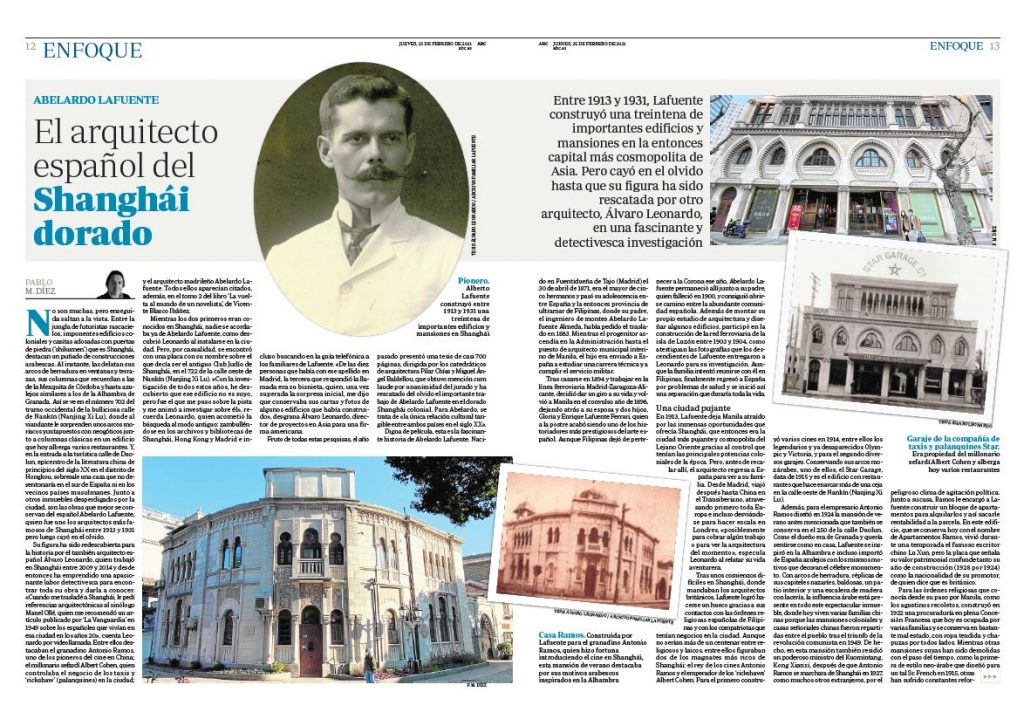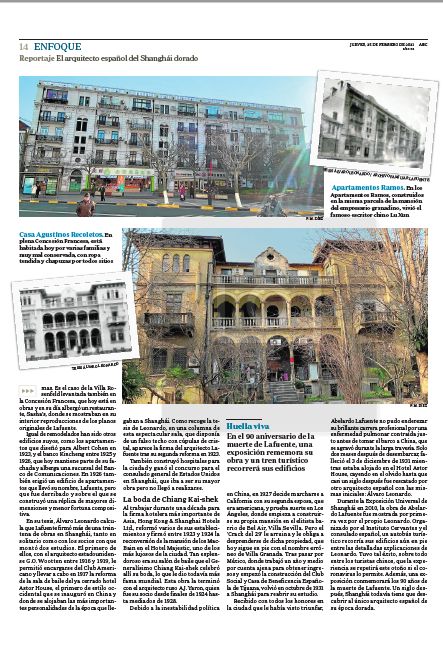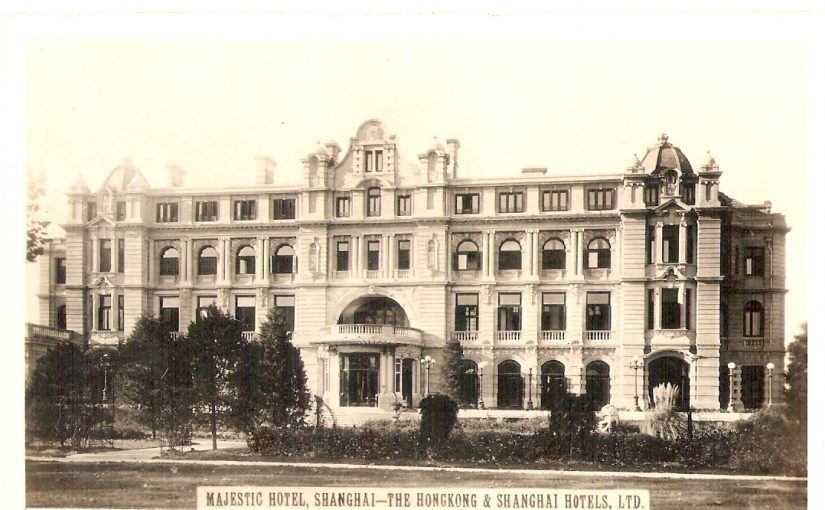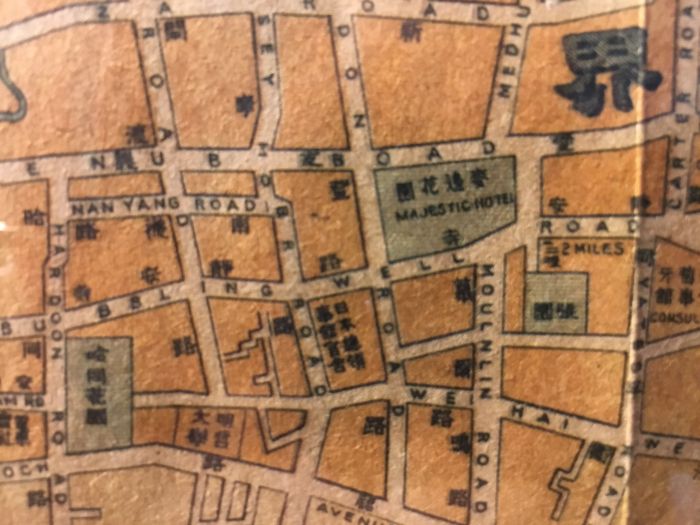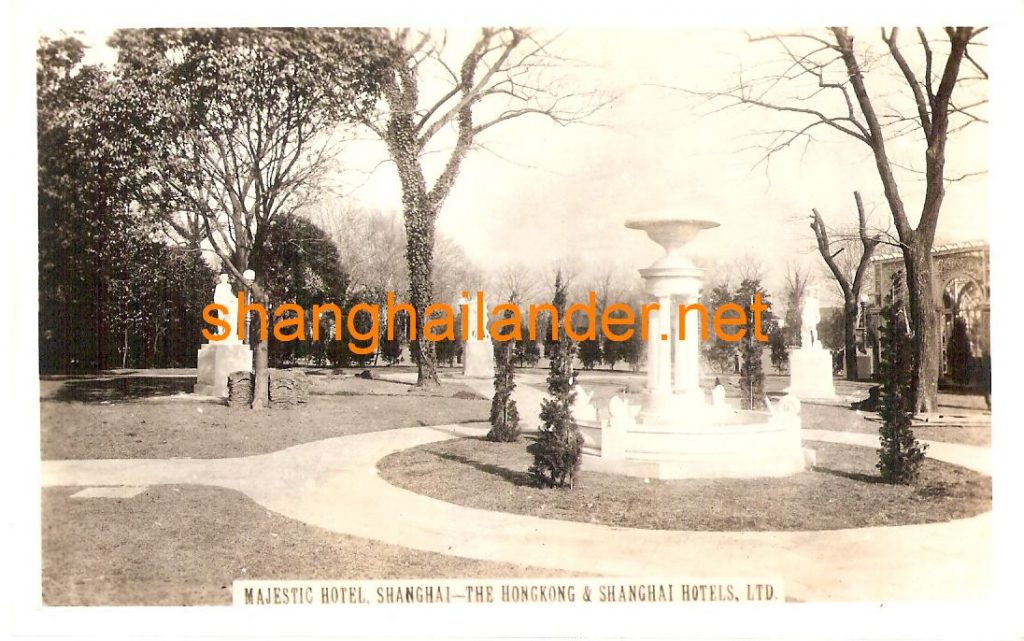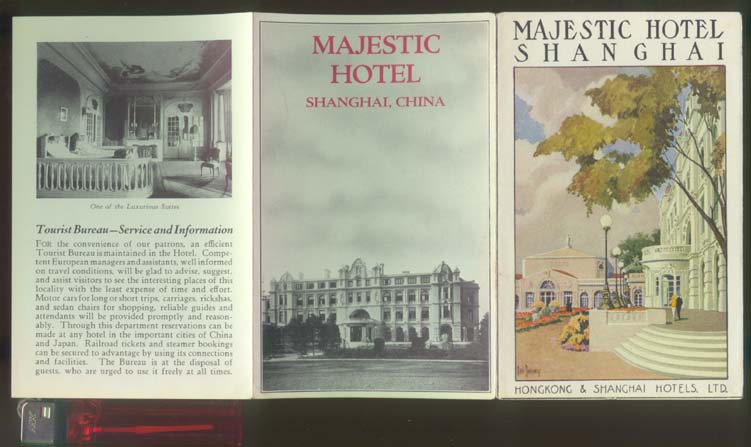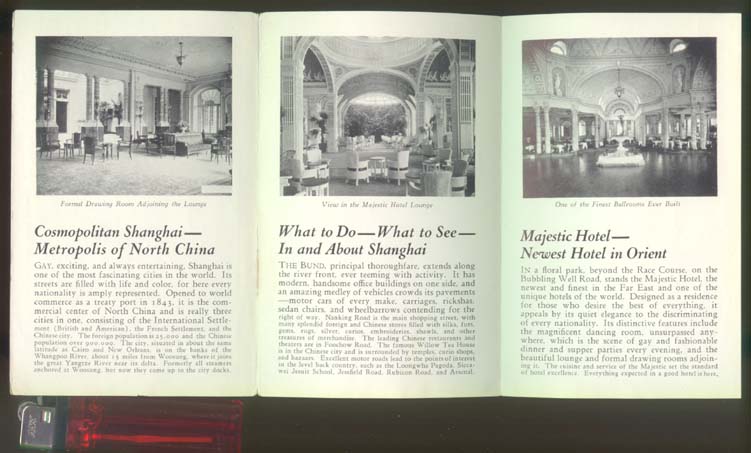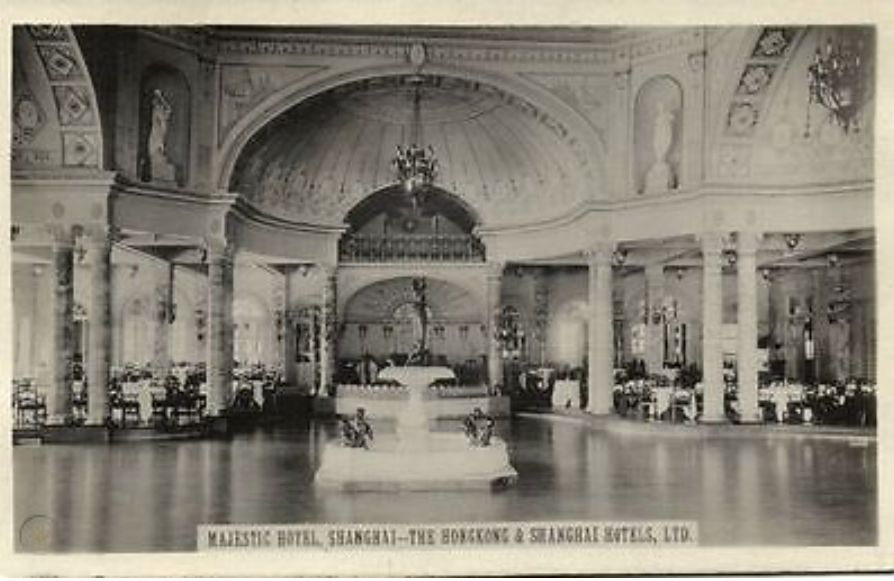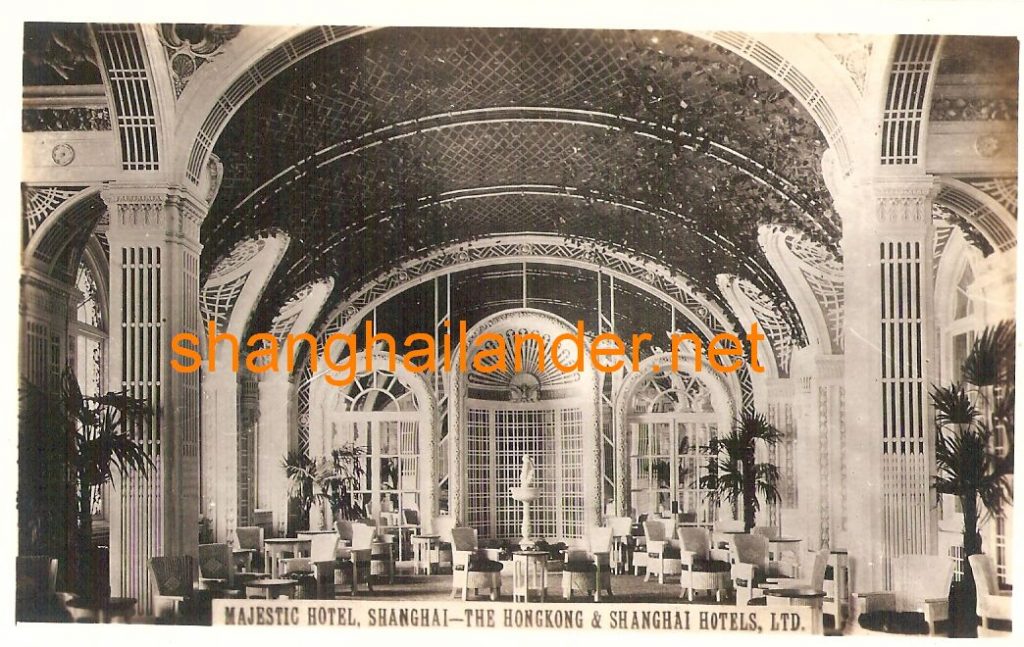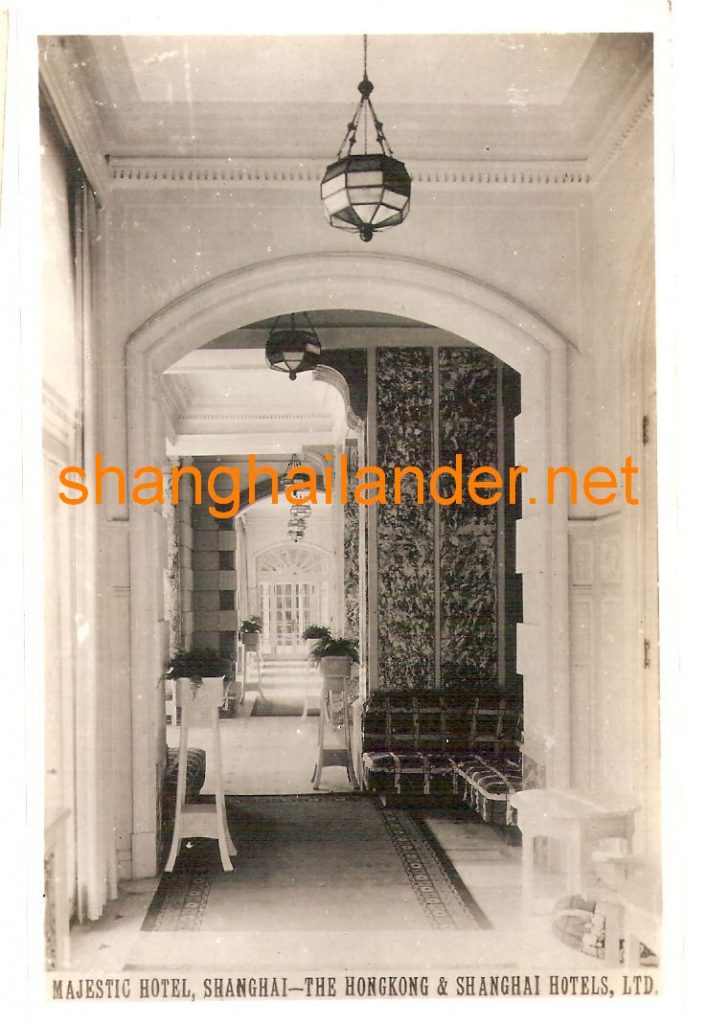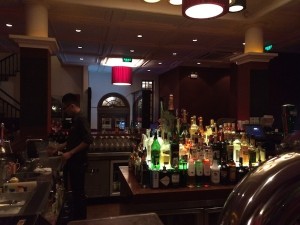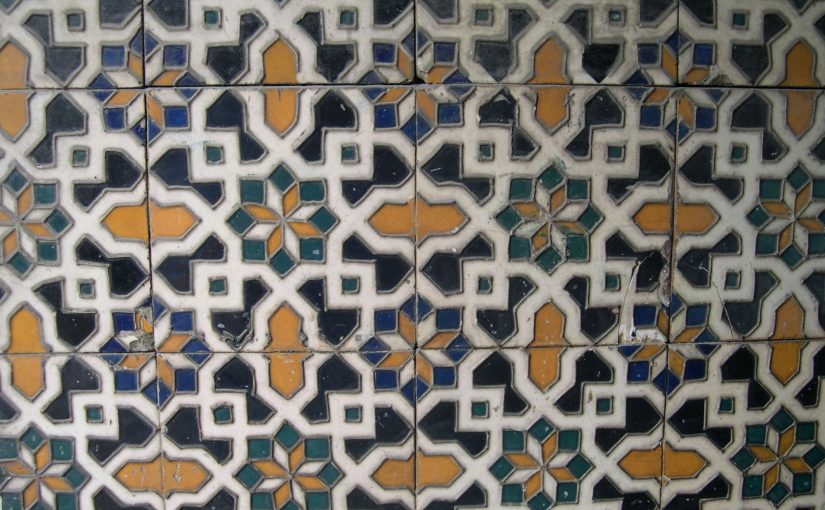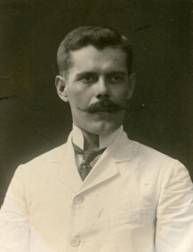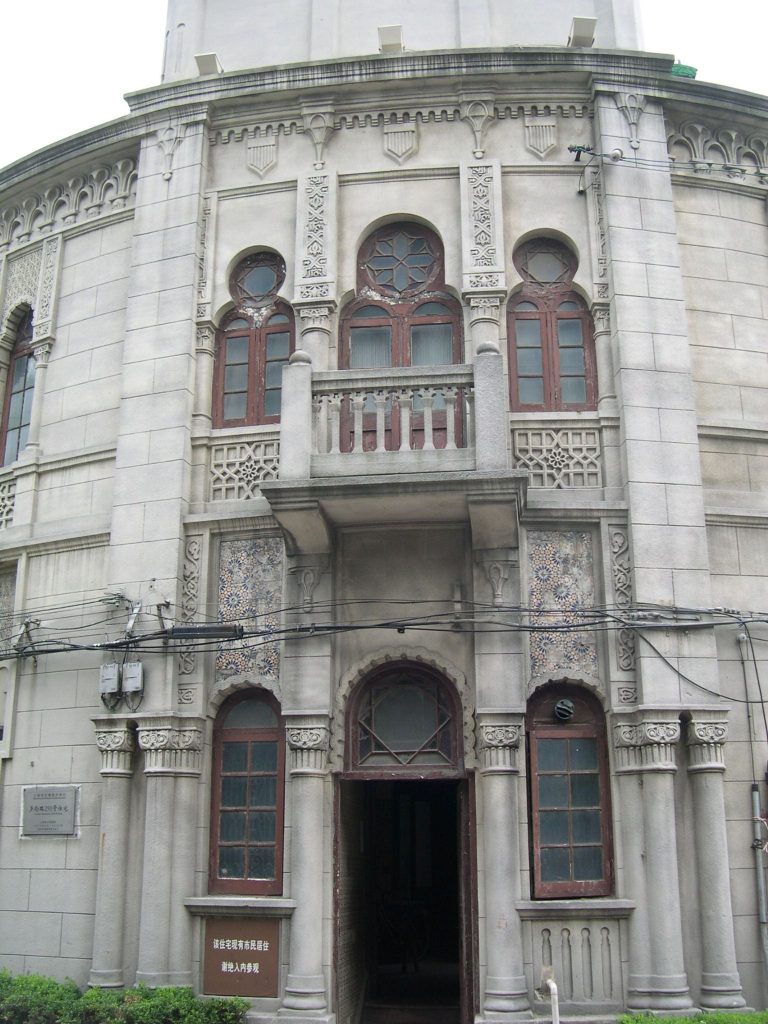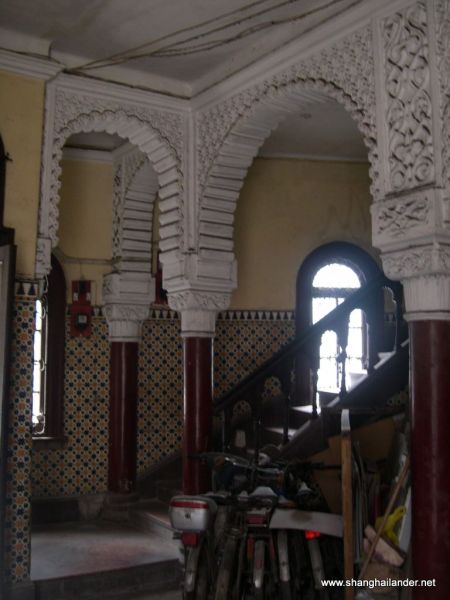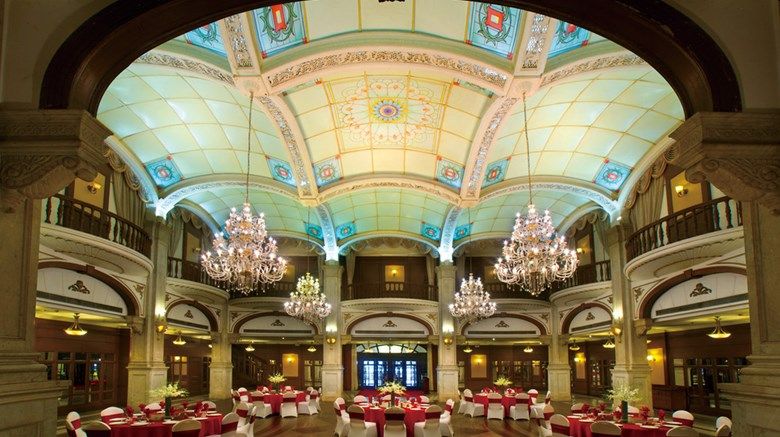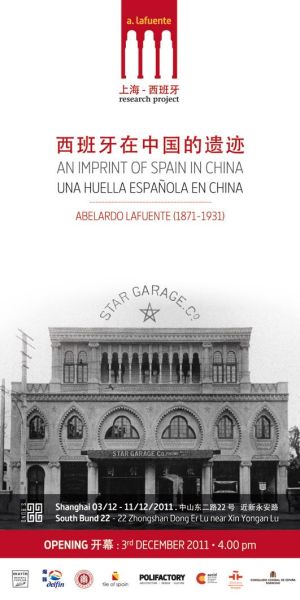The Majestic Hotel in Shanghai (1924-1931) was a legendary hotel in Old Shanghai. I wrote a post several years ago about it, that is regularly toping the most read article list (See post “The rise and fall of the Majestic hotel” for more info). Since the building was destroyed in 1932, there are only few pictures of the hotel available. Going through my own collection, I recently realised that I have a few of them taken during a special occasion.
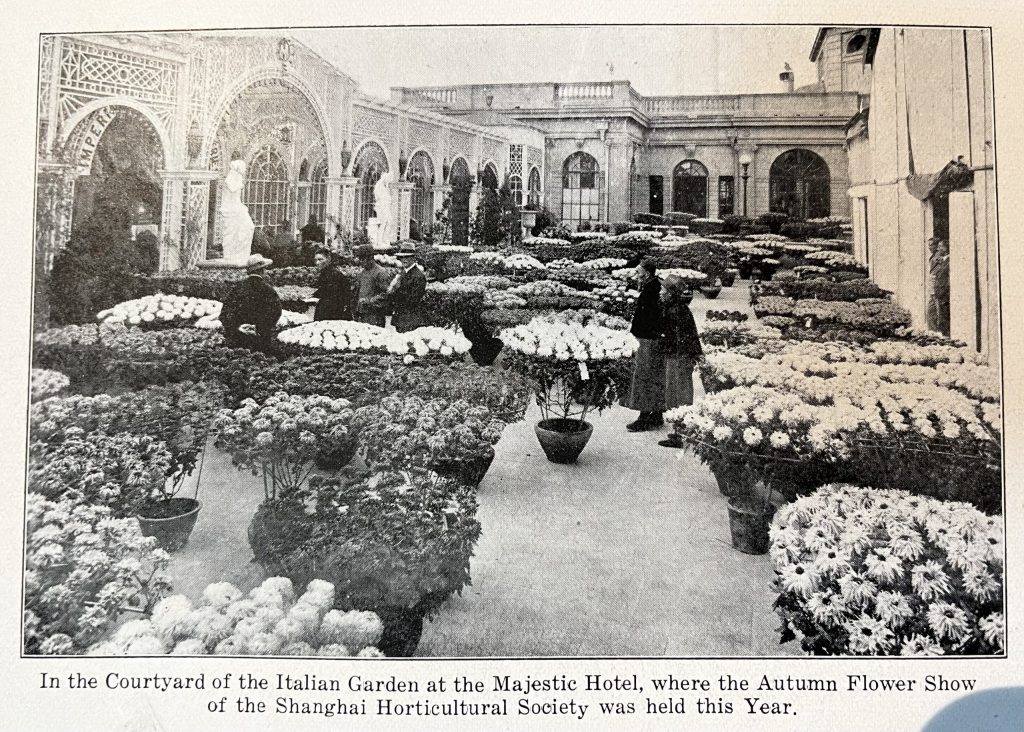
According to Nenad Djordjvic “Old Shanghai Clubs & Associations”, The Shanghai Horticultural Society was founded in the 1860’s. It had a yearly Autumn Flower Show, the last one taking place on 20-21 November 1940. It was certainly an important association as it received financial support from the Shanghai Municipal Council and was presided for many years by Horace Kadoorie, whose family owne the Hong Kong & Shanghai Hotels company owner of the Majestic Hotel. The above picture also appeared in the North-China Sunday News Magazine Supplement on 24 Nov 1929 (Thanks Katya Kniazeva for finding it!). So these pictures must be from the 1929 Autumn Flower Show.
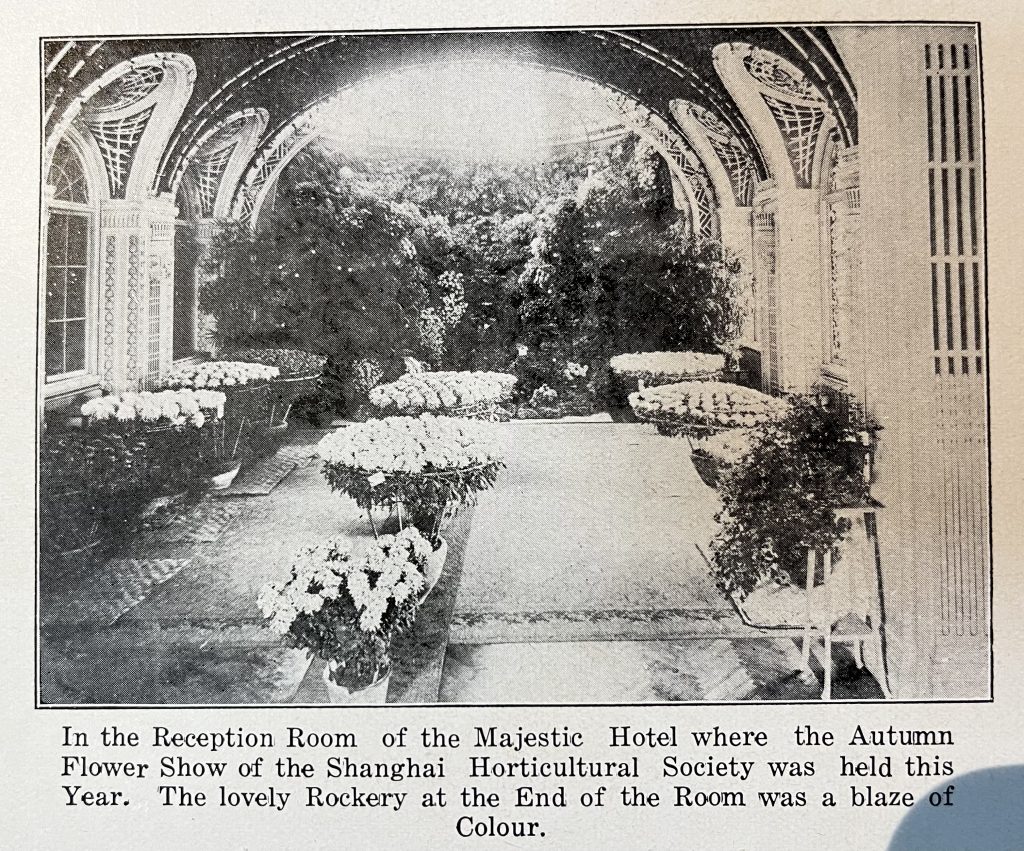
The reception room also appears in the original post “The rise and fall of the Majestic Hotel” but looks really different with all the flowers.
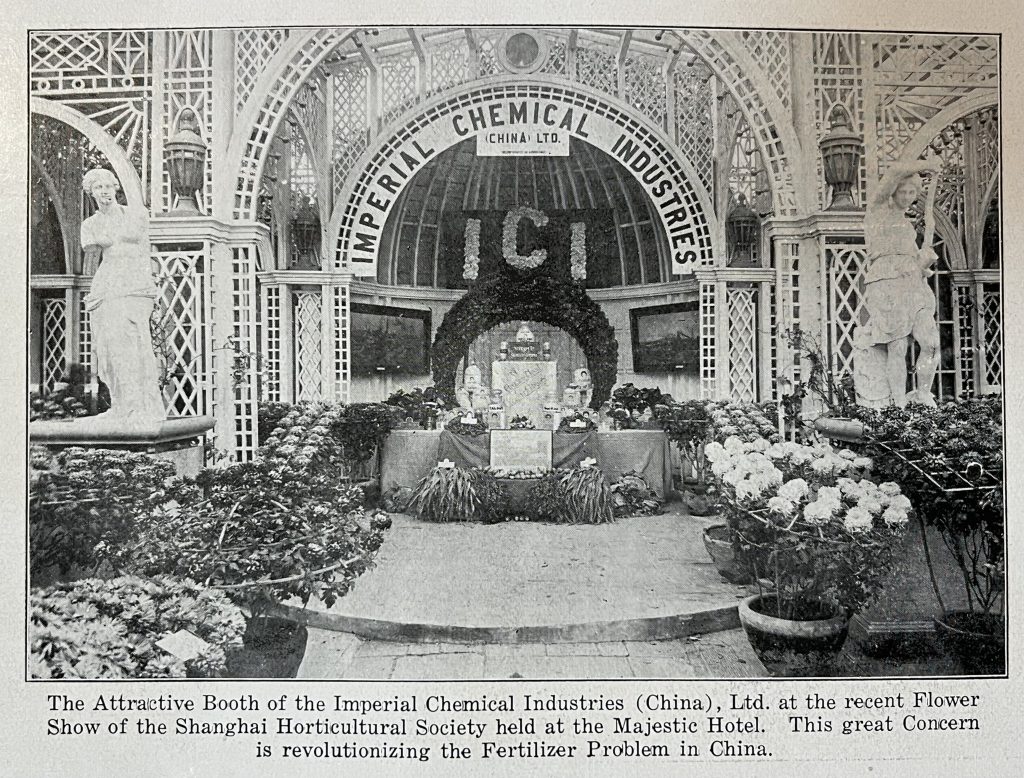
Imperial Chemical Industries was a major British chemical firm with strong presence in Old Shanghai. One of their products was fertiliser, a great product to advertise at a flower show. Our friends at Mofba did a post on ICI in Old Shanghai, follow the link to read it.
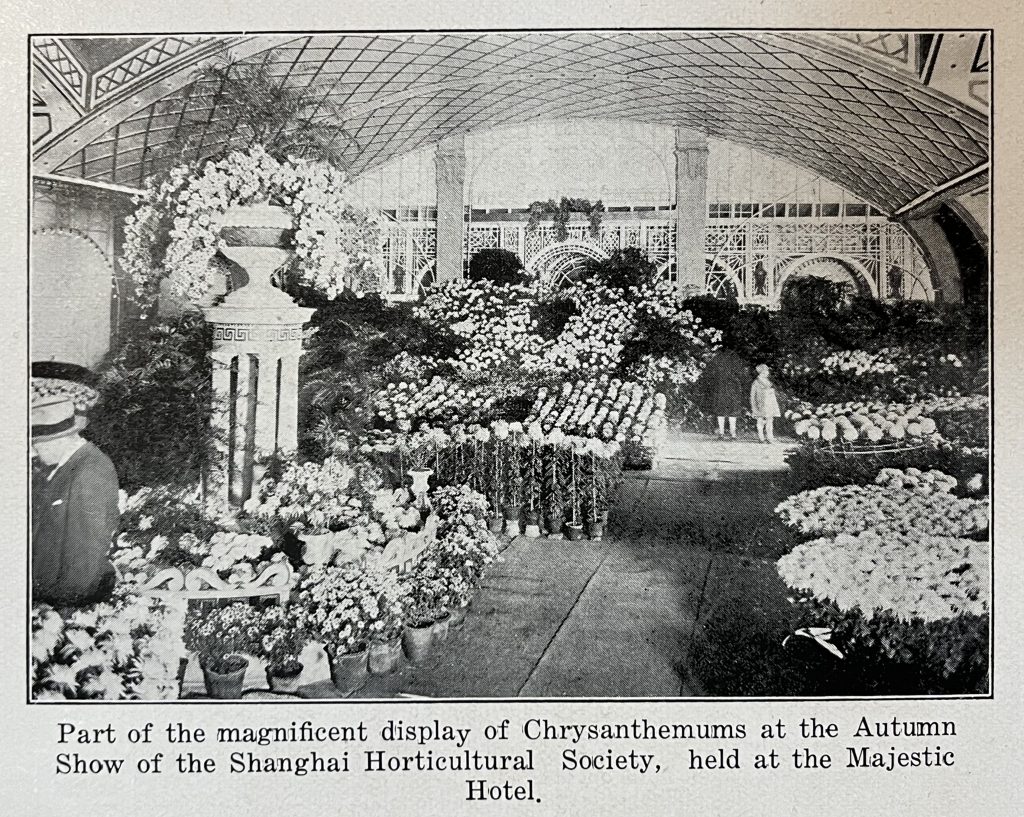
This picture is taken from the hotel, looking toward the winter garden. The Italian garden of the Majestic hotel where the event takes place was designed by Abelardo Lafuente, a spanish architect in Shanghai.
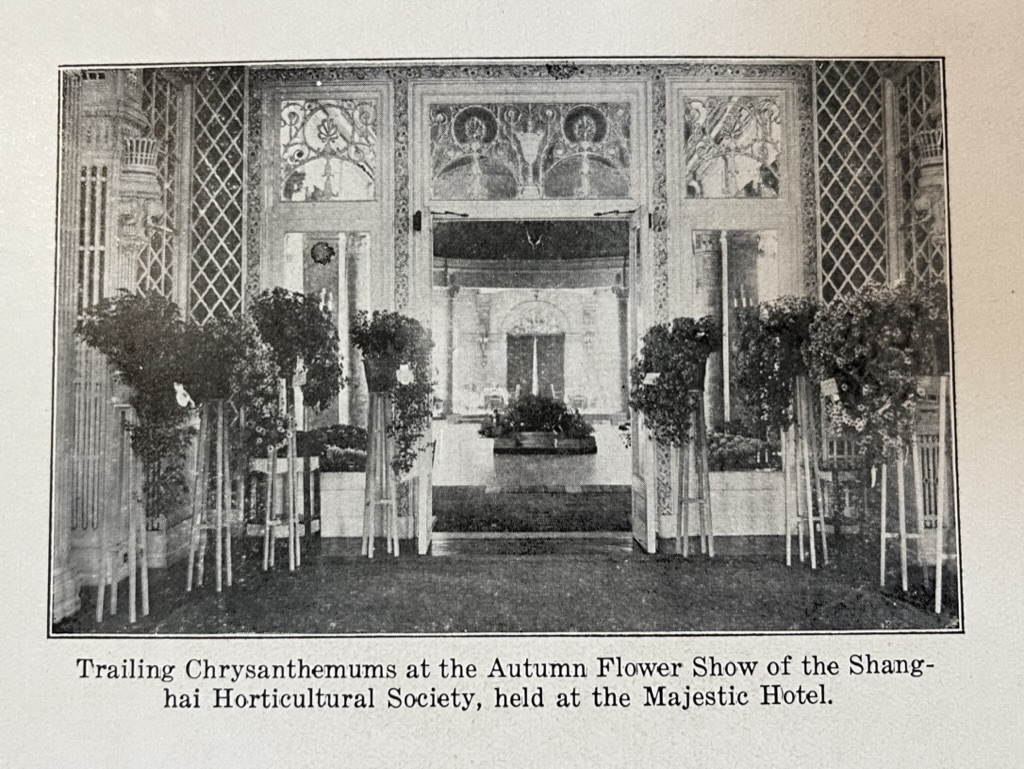
One of the few pictures of the beautiful iron work inside the hotel.
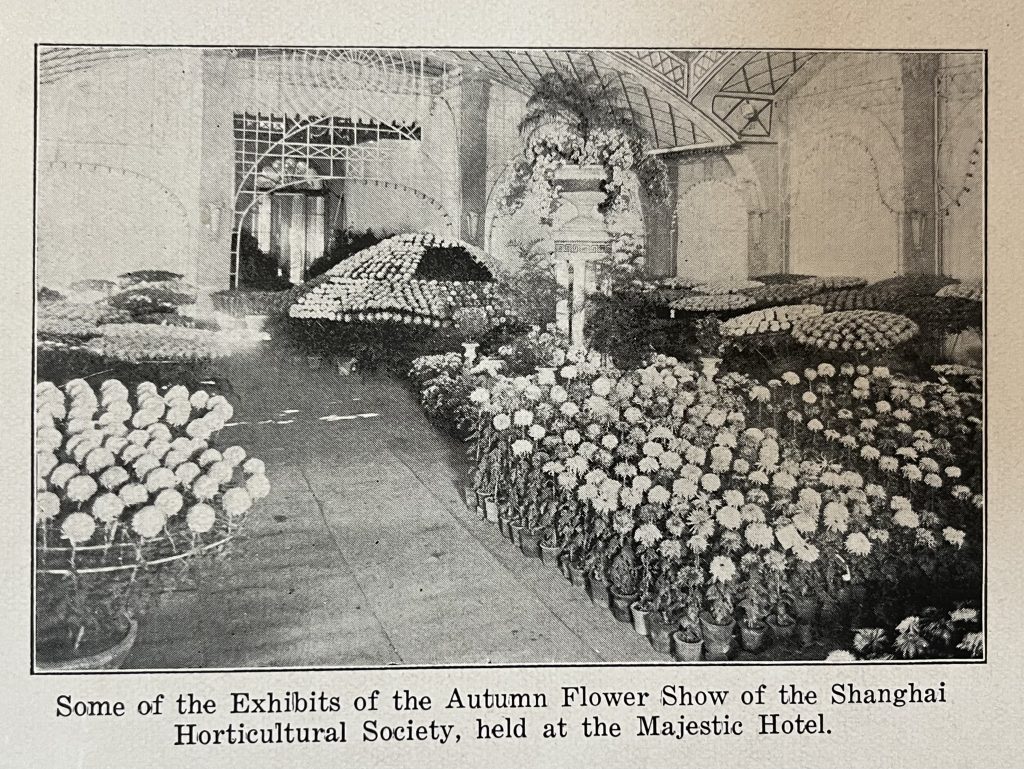
For more views and history of the Majestic Hotel, go to post “The rise and fall of the Majestic hotel“
